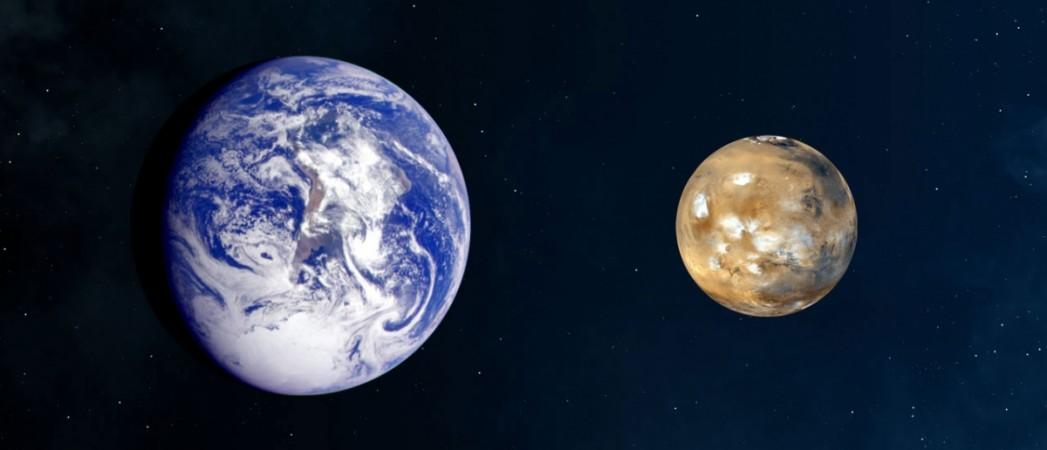
Earthlings have long been trying to find out the Martians. Although we haven't had much luck in catching the creatures from the Red Planet, here is our chance to catch the planet itself, well, in the night sky. Apparently, Mars is all set to make its closest approach, in 15 years, to our home planet.
There will be 35.8 million miles distance only within the two neighboring planets next Tuesday. Also, in the same week, on Friday, the Red Planet will be in opposition, which means, Mars and sun will be situated on the exact opposite sides of Earth. On that very day, some of the parts of the world will also be able to witness a total lunar eclipse. Quite a day it'd be!
Mars already appears brighter and it will shine even more vividly as the big day approaches. According to the astronomers, people may get a good view of the Red planet throughout the beginning of August. However, the ongoing massive Martian dust storm is making the surface details of the planet murkier than normal.
But the storm is a good news too. Essentially, the dust on Mars reflects sunlight, which will make the Red Planet appear even brighter in the night sky, said astronomer Harry Augensen from the Widener University.
Before this, Mars and Earth were seen closest in 2003. At that time they were 34.6 million miles apart, which was the closest distance between the planets in about 60,000 years. According to NASA, that's not happening again until 2287. However, in 2020, we will see another close encounter, when Earth and Mars are supposed to be 38.6 million miles away from each other.
This summer Hubble Space Telescope observed the Red Planet as well as Saturn. You can watch it here:

















